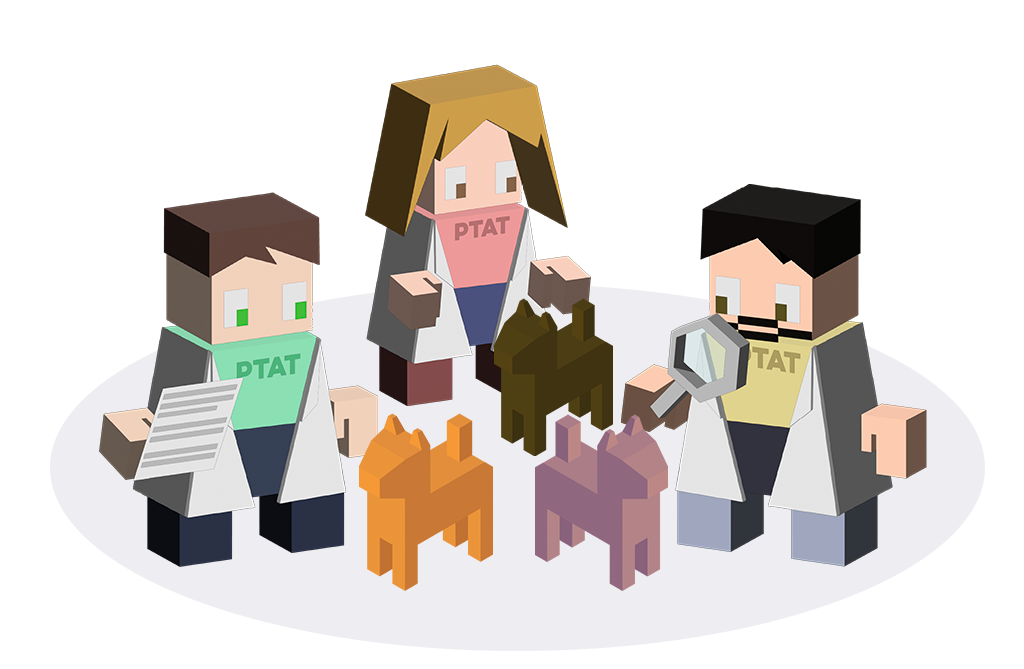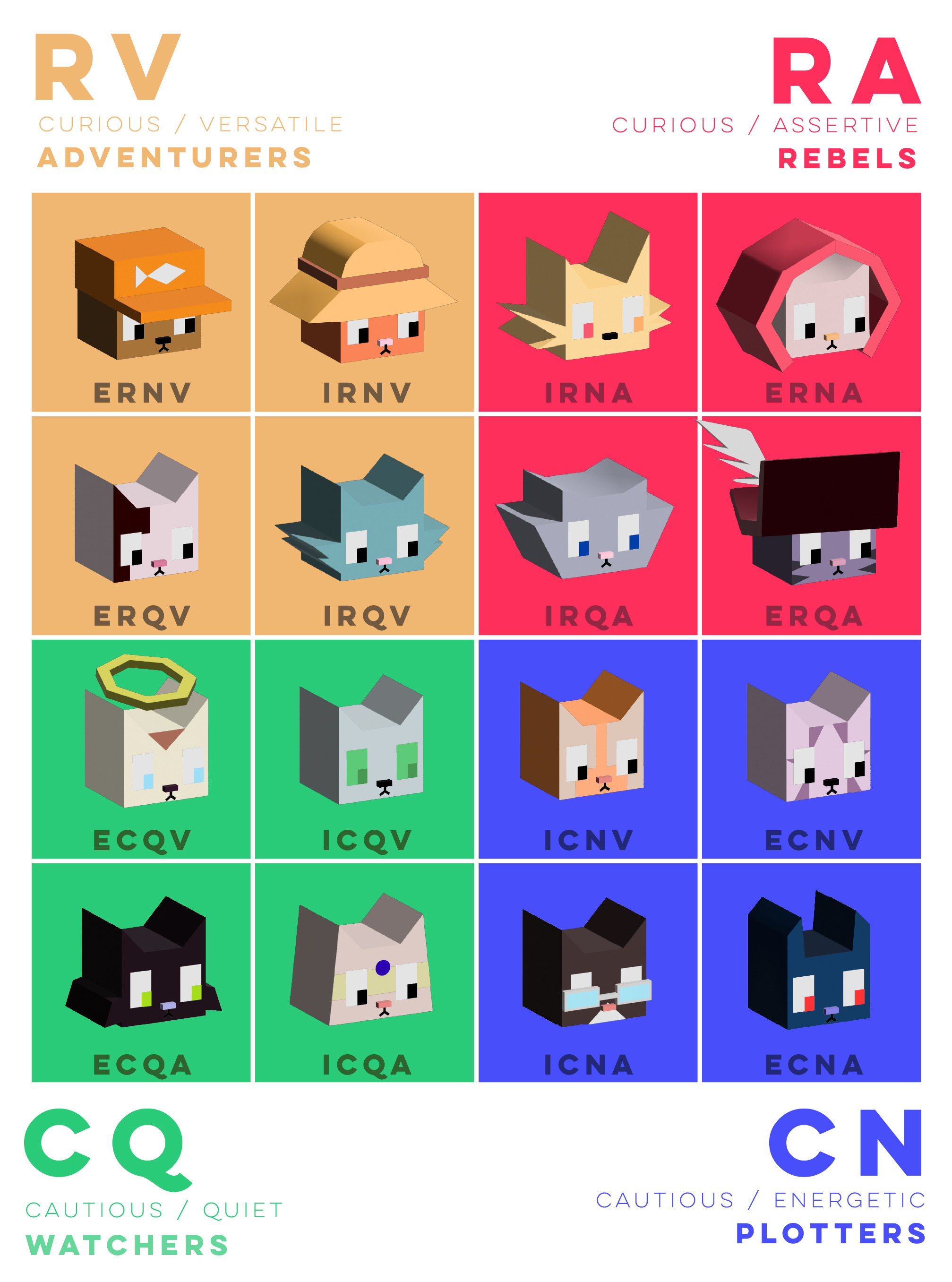The PTAT
Pet Temperament Assessment Tool
A Journey into Feline Psychology
Introduction to PTAT

The PTAT, acronym for Pet Temperament Assessment Tool, is a remarkable breakthrough in understanding feline behavior. This personality test for cats is the result of close collaboration between a couple passionate about psychology and animals and experts in animal behavior.
The Genesis of PTAT

The story of the PTAT is one of a passion turned into a life project. A young couple, united by their love for cats and equipped with knowledge in psychology and ethology, was inspired by the behavioral richness of their cat. Determined to deepen their understanding, they developed the PTAT with the support of animal behaviorists, turning observation into science.
The Structure of PTAT

The test is a feline adaptation of the MBTI theory, designed to map cat personalities through dimensions such as Introverted (I) / Extroverted (E) and Curious (R) / Cautious (C), among others. It also includes a playful scale ranging from Silly (Si) to Smart (Sm), adding a fun nuance to the assessment.
Objectives and Utility of PTAT
Beyond curiosity, the PTAT aims to improve the lives of cats and their owners. By deciphering individual cat traits, owners can better cater to their unique needs, thus promoting a happier and healthier environment for their furry companion.
Impact of PTAT
The PTAT is a celebration of the diversity of feline personalities. It provides owners with a tool not only to understand but also to enrich the lives of their companions. This innovative approach has marked the beginning of a new era in the relationship between cats and humans, highlighting the importance of individuality and animal well-being.